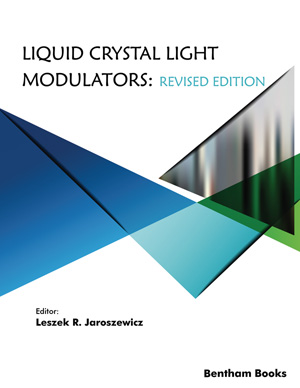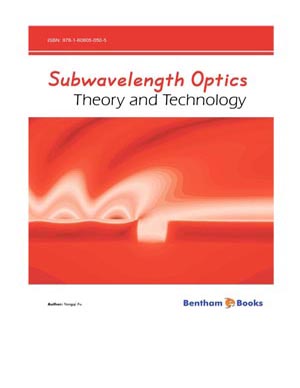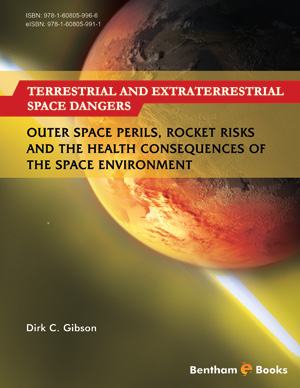Book Volume 2
Introduction
Page: 3-9 (7)
Author: Eliade Stefanescu
DOI: 10.2174/9781681084190117020002
PDF Price: $15
Abstract
While in the first volume of this book we presented a set of methods for the description of the open systems, and applications to a superradiant semiconductor structure, in this volume we concentrate on the microscopic theory and a detailed investigation of the heat conversion into usable energy. Our study is essentially based on master equations with explicit microscopic coefficients, for the active electrons, superradiant field, and crystal lattice vibrations. The quantum dynamics of electrons and electromagnetic field is obtained in the framework of a unified relativistic quantum theory, from the description of a quantum particle as a vibration propagating in space, and a relativistic principle asserting a limitation of the wave function spectrum for a finite velocity c, which does not depend on the frame of reference. The electron dynamics is described in the periodic potential of a crystal lattice and an internal field induced by impurity doping, thermal vibrations, or the application of external fields. The dissipative processes are described as resonant phenomena, with energy conservation, of correlated transitions of particles in the systems of interest with other particles of the crystal. We investigate the operation characteristics for the two versions of the device, the longitudinal quantum heat converter, and the transversal one, and the corresponding structures for the conversion of electromagnetic energy into electric energy.
Unitary Relativistic Quantum Dynamics and Electromagnetic Field
Page: 10-55 (46)
Author: Eliade Stefanescu
DOI: 10.2174/9781681084190117020003
PDF Price: $15
Abstract
In this chapter, we consider a quantum particle wave function with a bound spectrum of velocity c, and obtain the relativistic momentum based on the group velocity of this wave function. With a space-time isometry condition, the Lorentz transformation and the relativistic dynamics were obtained. Considering a field interacting with a quantum particle as a four-vector conjugated to the space-time vector in the time-dependent phase, we obtain the Lorenz force and the Maxwell equations. It is interesting that only the Ampère-Maxwell equation of a magnetic circuit is specific to the electromagnetic field, while the other equations are general for a field interacting with a charged quantum particle. Considering the time-dependent phase of a quantum particle interacting with an electromagnetic field with a space-time homogeneity condition, we obtain Lorentz transformations for this field. For a quantum particle at a non-relativistic velocity, we obtain a wave function with a very rapidly-varying factor, of a frequency proportional to the rest energy of this particle. From the Schrödinger equation of a particle with a relativistic Hamiltonian, we obtain a split of the wave function into four components, describing a proper rotation of this particle with an angular momentum called spin (Dirac’s relativistic electron theory). Moreover, we also calculate electron potential in the magnetic field, and two-electron interaction potential.
Quantum Systems of Electrons in a Semiconductor Crystal
Page: 56-150 (95)
Author: Eliade Stefanescu
DOI: 10.2174/9781681084190117020004
PDF Price: $15
Abstract
In this chapter, we describe steady states and dynamical characteristics of the electrons in the periodic potential of a crystal, and the application of three semiconductor elements: the rectifying junction, the bipolar transistor, and the superradiant junction. While for an arbitrary potential the electron momentum does not commute with the Hamiltonian, in the periodic potential of a crystal lattice we find a quasi-momentum, which commutes with this Hamiltonian. We obtain the quasimomentum eigenvalues as eigenvectors of the reciprocal lattice. In this way, we find quasi-momentum eigenstates, called Bloch states, the energy as a function of this quasi-momentum, and equilibrium eigenstates in the quasi-momentum space. From the energy variation with the quasi-momentum in the equilibrium states, we find the tensor of the effective mass of the electron in a crystal lattice. We find that for an internal potential of interaction oriented with the gradient perpendicular to the equilibrium quasi-momentum, the electron dynamics in the semiconductor structure is simply described by the Schrödinger equation of this potential, while the periodic potential of the crystal lattice does not play any role. For N electrons in a quantization volume V, we derive the density of Bloch states as a function of the crystal lattice characteristics. We find the velocity and the acceleration of an electron under the action of an internal potential. Considering a Fermi-Dirac distribution of the Bloch states, we obtain the current density under the action of such a potential. With the statistical distributions and the current densities for electrons and holes, we obtain the electrical characteristics for a semiconductor junction and a bipolar transistor. We consider a superradiant junction, where the electron injection is performed by quantum transitions from an nregion to the p-region in quantum dot arrays. We calculate the wave functions, the electric field, and the potential variation between the two conduction regions, and the dipole moments for two polarizations of the superradiant field: in the direction of the injected current, and in a perpendicular direction to the current.
Superradiant Structure and Heat Conversion into Usable Energy
Page: 151-222 (72)
Author: Eliade Stefanescu
DOI: 10.2174/9781681084190117020005
PDF Price: $15
Abstract
In this chapter, we derive the operational characteristics of quantum heat converter and a quantum injection device, as functions of the semiconductor structures. We describe the couplings of the active electrons with the superradiant field, the crystal vibrations, and the quasi-free electrons and holes in the conduction regions. The dissipative couplings of the electromagnetic field with the optical vibrations and the quasi-free conduction electrons and holes are taken into consideration according to the results obtained in the first volume. The superradiant power of a quantum heat converter under the action of a current injected in the device, and the electric current generated by a quantum injection device under the action of an incident electromagnetic field are entirely obtained as functions of the physical characteristics and universal constants. We perform numerical calculations for semiconductor structures providing electromagnetic and electric powers of practical interest. Both possible semiconductor configurations, the longitudinal configuration, with the field propagating in the direction of the injected current, and the transversal one, with the field propagating perpendicularly to the injected current, are taken into account.
Appendix A: Structure of a Superradiant Junction
Page: 223-234 (12)
Author: Eliade Stefanescu
DOI: 10.2174/9781681084190117020006
Appendix B: Particle in a System of Oscillators
Page: 235-236 (2)
Author: Eliade Stefanescu
DOI: 10.2174/9781681084190117020007
Introduction
The second volume of this book series presents a foundation for describing electron-field interactions, the basic elements involved in open quantum theory, the dissipative couplings of the active elements, the quantum injection dot electrons and coherent electromagnetic fields produced by crystal lattice vibrations. A microscopic description of the systems of interest is used to explain a number of structural models that describe electron arrangement and mechanics in such systems. The explanation of these models depends on a number of numerical parameters and calculations which have been explicitly discussed in detail. Readers will gain a better understanding of open quantum systems and energy conversion in semiconductor devices. Theoretical calculations presented in this book can also be compared with experimental data from prior experiments. The volume is also supplemented by an adequate bibliography which provides useful references. This book is a handy text on advanced quantum theory for advanced physics and electronics students and researchers.








